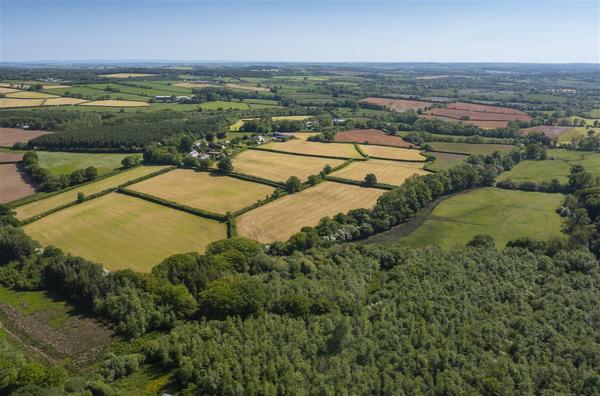Material World – Think global, act global
There is an interesting report in The Conversation of a recent paper by a group of academics on optimal land use for agriculture and carbon capture (see ‘Benefits and trade-offs of optimizing global land use for food, water, and carbon’ in the journal PNAS. They ‘targeted three key ecosystem service (ES) indicators: total carbon (C) storage (indicative of climate regulation and climate-change mitigation), crop production (indicative of food supply), and available runoff (indicative of freshwater supply)’ and produced models to balance these three objectives.
 This is interesting to us, because it is an example of how we can look globally at land use, looking at competing objectives (and trying to balance them) and not using money as an indicator: in short, the things necessary to engage in a planned co-operative economy. We don’t need to endorse the specific results of this group of academics to see the possibility of this level of global land use planning. But, as they state: ‘Results show a potential to increase all three indicators (+83% in crop production, +8% in available runoff, and +3% in carbon storage globally)’.
This is interesting to us, because it is an example of how we can look globally at land use, looking at competing objectives (and trying to balance them) and not using money as an indicator: in short, the things necessary to engage in a planned co-operative economy. We don’t need to endorse the specific results of this group of academics to see the possibility of this level of global land use planning. But, as they state: ‘Results show a potential to increase all three indicators (+83% in crop production, +8% in available runoff, and +3% in carbon storage globally)’.
However in the article, Deepa Senapathi points up what this could mean:
‘It’s also tough to see the suggested land use as feasible or pragmatic when geopolitical and socioeconomic factors tend to drive decisions on what to do with land. For example, the optimisation suggests more cropland in most of Great Britain, with parts of Scotland and southern and eastern England left to nature. But this would require significant policy and socio-culture change in a country where 52% of land is already enclosed farmland and only 11% is woodland.
‘Only a very brave politician would suggest abandoning British farms, or taking iconic woodlands or moorland grazed by sheep and turning them into wheat fields.’
She also notes that there are other factors: flood plains, biodiversity and insect life that would need to be taken into consideration. This is true enough. Impressive though the optimisation algorithms are on a global scale, the kind of changes that this paper suggests would be necessary would require detailed local planning and co-operation to achieve. We would not believe for one instant that a small group of academics in Germany could produce wholesale a plan to tell the world how to use its land. Indeed, in our pamphlet Socialism as a Practical Alternative we note:
‘In socialism a world specialist body like the FAO [Food and Agriculture Organisation] could be concerned with co-ordination, assistance and advice. It would be in a position to provide this service against a detailed world picture of all the problems associated with the need to increase world food production in ways which would be safe within the natural systems of the environment. This is not to suggest that such world bodies would be entirely centralized and operating from a single world location. They could operate regionally and locally and their members could be involved in any scale of activity where the necessity might arise.’
Freed from the imperatives of geopolitical confrontation between property owners and the incessant drive to make monetary profit, information from such studies as this PNAS paper could be part of a worldwide debate to democratically agree a common course of action, as well as guidance for local debate on implementation. Indeed, to even make their model work, the German academics had to assume an absence of trade barriers for food and water.
Even land non-use is important, as they note that their ‘results further strengthen previous work that highlighted the importance of conserving tropical and boreal forested regions for their unique climate regulation services […] and emphasize that crop and fodder production should be focused on temperate and subtropical regions.’ The logic of capitalism would see this as a waste, as it demands that everything be put to instrumental use in making profit, deliberately choosing not to exploit a resource is outside the capacity of the market system, no matter how vital it is to human survival.
Still, it is useful to note that the paper tells us that we have scope to increase food production, as well as a useful element in fighting climate change by securing more carbon in plants and soil.
It also shows us how computer algorithms and models can be applied to solving the world’s problems, but, again, not in isolation or as a technocratic fix, but as part of an ongoing discussion and democratic decision. That’s why it is important that the paper’s authors have made some of their data and models available (github.com/slautenb/lpjguessOptim) as a part of open science.
At each stage in the debate, to implement this sort of co-ordination would require openness and accountability.
PIK SMEET
